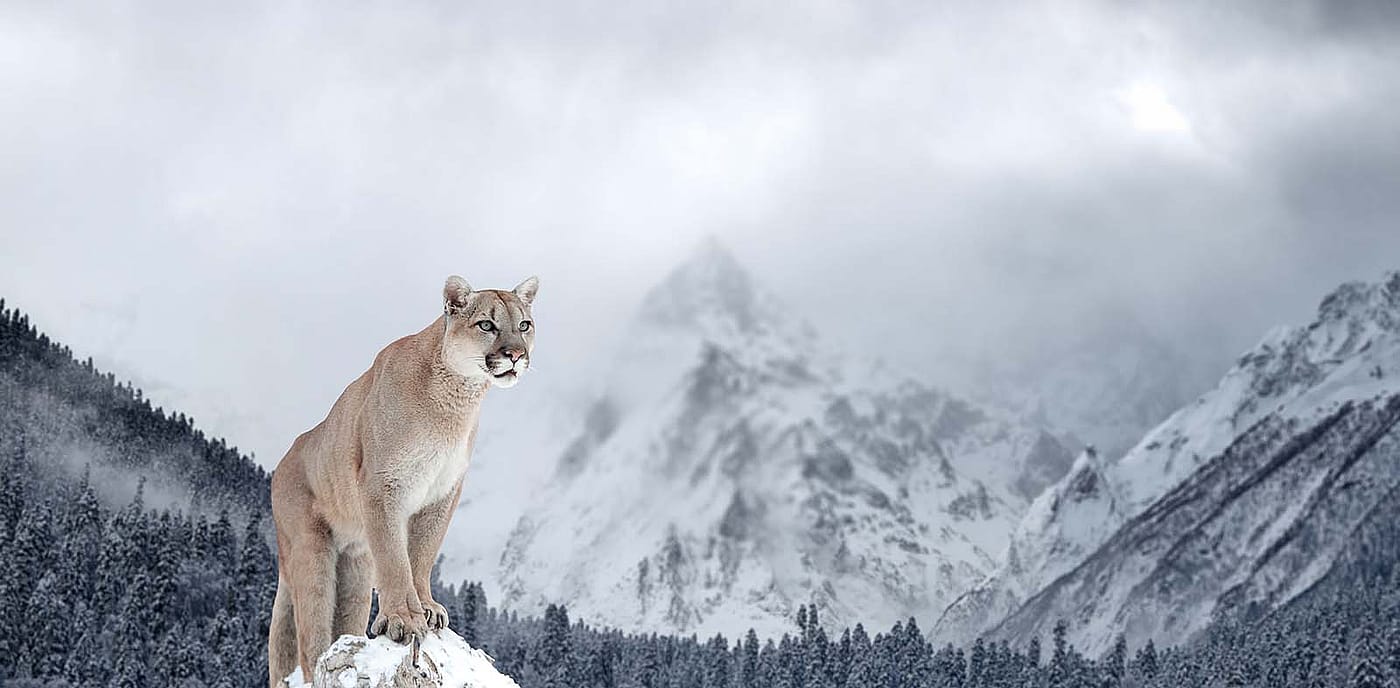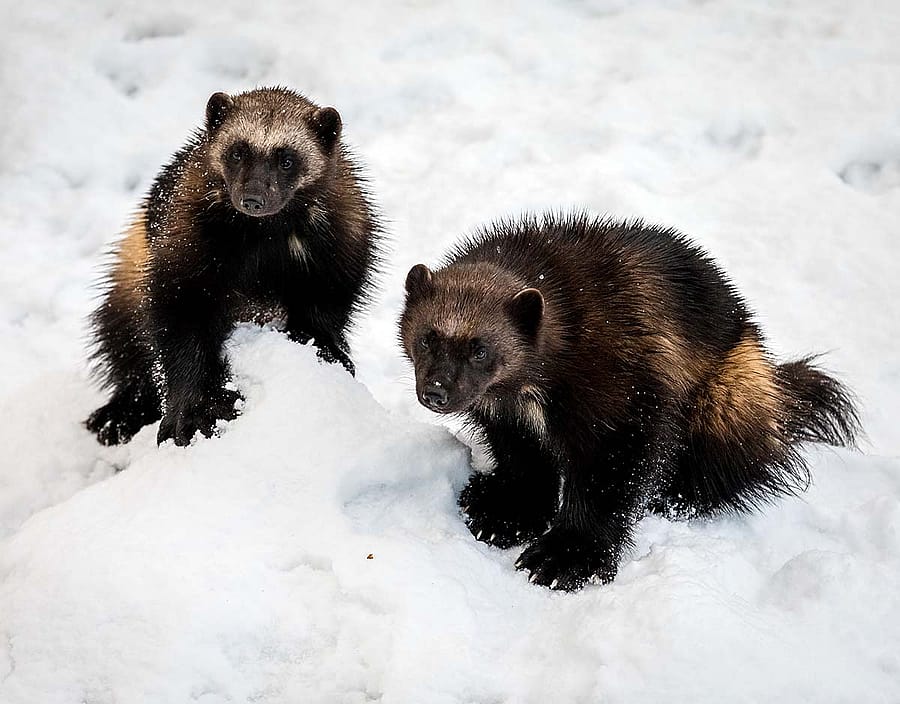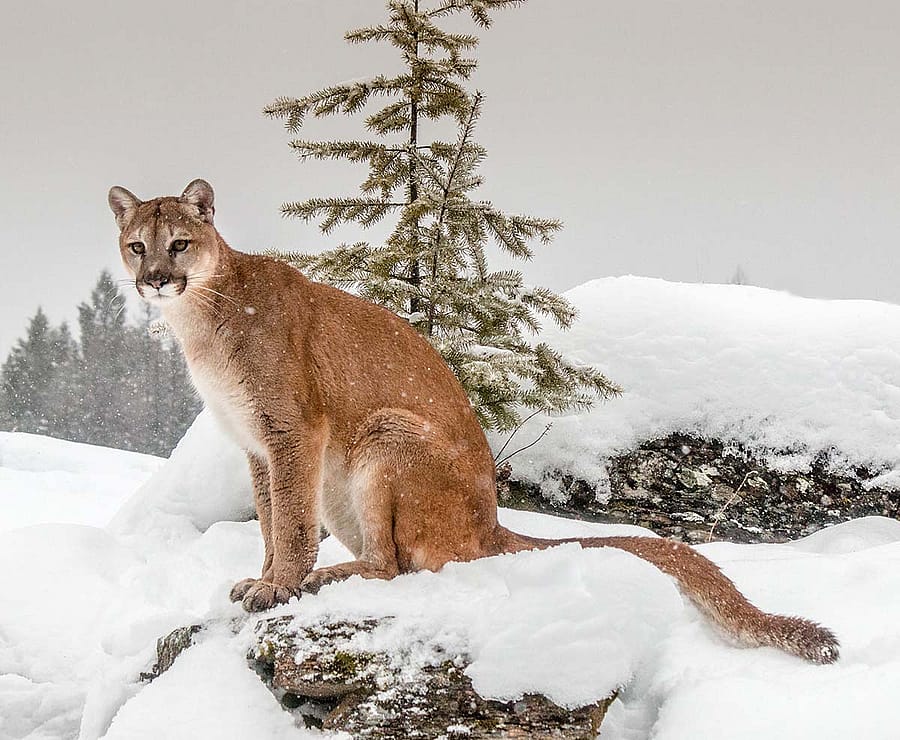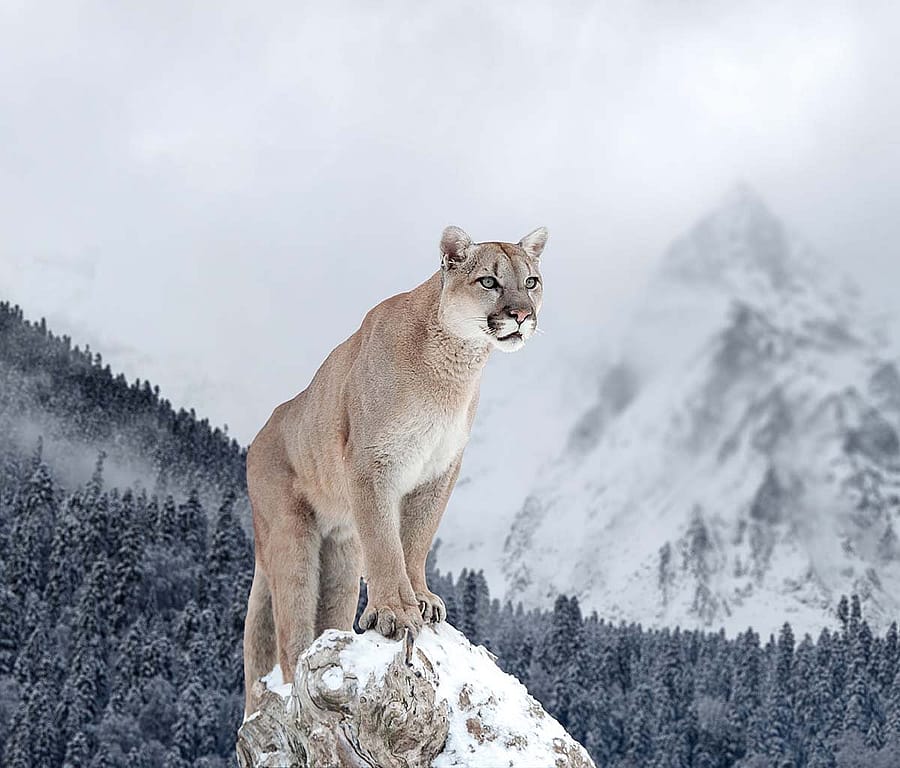
Seldom Seen: Elusive Predators of Yellowstone Country – Points West Online
Originally published in Points West magazine
Winter 2019–2020
Seldom Seen: Elusive Predators of Yellowstone Country
By Mark Davis
Bill Hackney was driving on Muddy Mountain near Casper, Wyoming, when something odd caught his eye. It had an unusual gate, running next to the road for about 30 feet before dropping off the shoulder and disappearing in thick timber. It was a wolverine.
“His back legs were longer than the front, and he had a stripe back into his tail,” Hackney said. The experienced backcountry explorer has spent much of his 72 years in Wyoming’s isolated mountains. But Hackney said he will never forget that first wolverine sighting 47 years ago.
It’s one of a handful of seldom-seen species that call Wyoming home, but that garner far less attention than other toothy predators like grizzly bears, gray wolves, and coyotes.
In fact, a trio of unheralded but elusive predators top the bucket lists of many greater Yellowstone area wildlife watchers: the wolverine, Canada lynx, and cougar.
Hackney didn’t report seeing the wolverine. “If I would’ve called it in, Game and Fish would have documented me as crazy,” he said.

At the time, the Wyoming Game and Fish Department was reporting no wolverines in the state, Hackney said. But times have changed. Five years ago, Hackney again saw a wolverine while in the Shoshone National Forest backcountry between Dubois and Meeteetse.
In late 2016, Game and Fish biologists and a team of volunteers placed trail cameras and wire hair snares throughout the Bighorn Mountains and Greater Yellowstone area to gather DNA samples and data on the presence of wolverines.
Wolverines require hundreds of square miles to hunt, forage, and mate. The chances of seeing one are slim at best. The same is true of Canada lynx, and the more common but still elusive cougar.

Like wolverines, lynx spend their lives in isolated, high-altitude habitats. But unlike the omnivorous wolverine, lynx are strictly carnivorous. Their main prey are snowshoe hares.
Catching a glimpse of Canada lynx or wolverines is difficult—especially in winter—because of the difficulty of reaching their remote, rugged home ranges.
Cougars—also known as pumas, mountain lions, and panthers—are present around Cody in much higher numbers. But they are elusive and solitary, hunting as ambush predators mostly at night, dawn, and dusk.

Daniel Thompson, large carnivore section supervisor for Game and Fish, remembers the first time he saw a cougar in the wild. He tracked the collared male using radio telemetry.
“It’s something I’ll never forget. I knew it was right there in front of me, but it took a while to see it,” he said.
Despite his research and spending a great deal of time in cougar habitat, Thompson has seen few in the wild.
“Just seeing one is better than 99.5 percent of humanity,” he said.
“Every time I’ve ever had my hands on a mountain lion, observed or seen a mountain lion, it’s something you never forget,” he said.
Corey Anco, Assistant Curator of the Draper Natural History Museum, has worked previously for the U.S. Forest Service, U.S. Fish and Wildlife Service, U.S. Geological Survey, and the National Geographic Society’s Big Cats Initiative. Despite years spent as a researcher and climber in the mountains around Yellowstone National Park, Anco has never seen a wolverine, cougar, or Canada lynx in the wild.
He suggests looking for signs of the three elusive species as the next best thing to spotting them in the flesh. The presence of scat, prey species, or tracks give clues to their presence. And with a little luck or using technology like trail cameras, you might be rewarded with the view of a lifetime.
Because the three are low-density species, Anco networks with other researchers working in high altitude habitats, asking that the GPS locations and samples of suspected scat of any of the three species be sent to his lab. Clues to feeding habits and DNA can be extracted from excrement. But such samples are extremely rare.
Anco said there’s only one way to catch that once-in-a-lifetime sighting of the area’s rarest species: get outside.
“Spend time in the mountains. Spend time in the foothills. Be careful,” he cautioned. “But if you want to increase the likelihood of seeing any of the rarest animals, you’ve got to spend time outside.”
About the author
Mark Davis is the outdoors reporter for the Powell Tribune. He has worked previously as a reporter and photojournalist in Chicago and Omaha, and enjoys hunting, fishing, birdwatching, and all outdoor sports.
Post 297
Written By
Nancy McClure
Nancy now does Grants & Foundations Relations for the Center of the West's Development Department, but was formerly the Content Producer for the Center's Public Relations Department, where her work included writing and updating website content, publicizing events, copy editing, working with images, and producing the e-newsletter Western Wire. Her current job is seeking and applying for funding from government grants and private foundations. In her spare time, Nancy enjoys photography, reading, flower gardening, and playing the flute.











